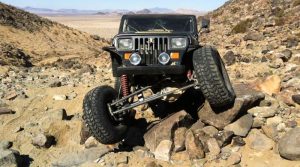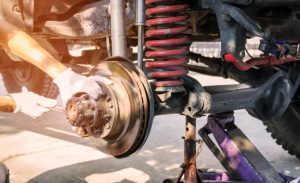When it comes to conquering rough terrain, a vehicle’s suspension system makes all the difference. Whether you’re tackling rocky trails, deep sand, or muddy tracks, a properly engineered off-road suspension system determines how well your vehicle handles the challenge. It’s not just about ride comfort — it’s about control, durability, and safety in extreme conditions.
This article explores what makes off-road suspension systems unique, their key components, how to choose the right setup, and what features to look for when upgrading.
What Makes Off-Road Suspension Different?

While standard suspension systems are designed for comfort and stability on paved roads, off-road setups prioritize flexibility, durability, and travel distance. Off-road suspensions are built to keep the tires in contact with the ground even when traversing obstacles, steep inclines, or uneven surfaces.
Core Differences Between On-Road and Off-Road Suspension Systems
| Feature | On-Road Suspension | Off-Road Suspension |
|---|---|---|
| Ride Comfort | Prioritized for smooth highways | Secondary to traction and control |
| Travel Distance | 80–150 mm | 200–400+ mm for rock crawling |
| Durability | Standard components | Reinforced for heavy loads and impact |
| Ground Clearance | Low to medium | High, adjustable via lift kits |
| Shock Absorbers | Twin-tube, tuned for comfort | Gas-charged or remote-reservoir for cooling |
| Springs | Softer for smoothness | Heavy-duty coils or leaf springs for load support |
Off-road suspensions focus on articulation — the ability of each wheel to move independently over obstacles — ensuring that the vehicle maintains traction even in uneven terrain.
Key Components of an Off-Road Suspension System
An off-road suspension setup involves several critical components designed to withstand extreme conditions.
Main Components Overview
| Component | Function | Off-Road Design Features |
|---|---|---|
| Shock absorbers | Control motion of springs and damp vibrations | Often gas-pressurized with larger piston diameters for better cooling |
| Springs (coil or leaf) | Support vehicle weight and control height | Heavy-duty coils or leaf springs to resist sagging |
| Control arms | Allow vertical wheel movement | Reinforced steel or tubular construction for durability |
| Sway bars | Reduce body roll | Often disconnectable for improved articulation |
| Bushings | Absorb vibrations and reduce metal contact | Polyurethane or high-durometer rubber for strength |
| Rear suspension components | Maintain stability under load | Adjustable setups for towing or cargo weight |
For reliable, high-quality off-road parts, you can Buy Suspension online to find OEM and performance-grade components suited for tough terrain.
Suspension Types Used in Off-Road Vehicles
Different off-road vehicles use varying suspension systems based on their design, weight, and purpose.
Common Off-Road Suspension Types
-
Solid Axle (Live Axle) Suspension
-
Provides excellent durability and articulation.
-
Common in trucks and rock crawlers.
-
Ideal for heavy-duty use.
-
-
Independent Front Suspension (IFS)
-
Offers better comfort and steering precision.
-
Favored in modern SUVs and light off-roaders.
-
Slightly less articulation compared to solid axles.
-
-
Multi-Link Suspension
-
Found in performance off-road vehicles.
-
Provides fine control and flexibility with multiple control arms.
-
-
Air or Hydraulic Suspension
-
Allows adjustable ride height and stiffness.
-
Common in high-end 4x4s and overlanding rigs.
-
More complex and expensive to maintain.
-
Essential Features for Extreme Terrain
When choosing or upgrading an off-road suspension system, certain features can significantly enhance performance in demanding environments:
Must-Have Off-Road Features:
-
Long Travel Shocks – Allow greater wheel movement for tackling rocks and dips.
-
Remote Reservoirs – Improve shock cooling and prevent fade during extended use.
-
Adjustable Ride Height – Achieved through coilovers or air systems for changing terrain.
-
Heavy-Duty Springs – Maintain vehicle height even under heavy loads or accessories.
-
Skid Plates & Reinforced Mounts – Protect components from impact damage.
-
Articulating Sway Bar Disconnects – Improve wheel independence on rough trails.
Performance Add-Ons:
-
High-clearance control arms
-
Reinforced track bars
-
Extended brake lines
-
Upgraded bushings and mounts
Cost Overview: Off-Road Suspension Upgrades
Upgrading to an off-road suspension can vary widely in cost depending on the vehicle type, parts quality, and level of customization.
| Upgrade Type | Average Cost (€) | Description |
|---|---|---|
| Basic lift kit (2–3”) | 400–800 | Entry-level improvement for mild off-roading |
| Heavy-duty shock absorbers | 600–1,200 | Gas-charged or adjustable shocks |
| Full coilover conversion | 1,200–2,500 | Complete upgrade for performance driving |
| Long-travel suspension kit | 2,000–4,000+ | Maximum articulation for extreme terrain |
| Air suspension upgrade | 2,500–5,000 | Adjustable comfort and ride height |
For best results, invest in quality suspension parts that match your vehicle’s specifications and driving style. Explore options and Buy Suspension online from a trusted supplier offering durable, off-road-tested components.
Maintenance Tips for Off-Road Suspension Longevity
Off-road conditions put immense stress on every suspension component. Regular maintenance ensures reliability and safety.
Maintenance Checklist:
-
Inspect shocks and mounts after every off-road trip.
-
Clean mud and debris to prevent corrosion.
-
Lubricate control arms and bushings periodically.
-
Check alignment after long-distance or rock-crawling trips.
-
Replace worn bushings or leaking shocks immediately.
-
Torque all bolts to manufacturer specifications.
Pro Tip: After every off-road adventure, rinse the undercarriage and suspension components with fresh water to remove mud and salt buildup.
Choosing the Right Suspension for Your Terrain

The ideal suspension setup depends on how and where you drive.
| Terrain Type | Recommended Setup | Notes |
|---|---|---|
| Rocky Trails | Long-travel coilovers, disconnectable sway bars | Maximize articulation |
| Mud & Sand | Lifted suspension, heavy-duty shocks | Prevent bottoming out |
| Overlanding | Load-rated springs, adjustable shocks | Handle cargo weight |
| Desert Racing | Remote-reservoir shocks, reinforced mounts | For high-speed stability |
| Snow / Ice | Moderate lift, flexible springs | Maintain tire contact for grip |
A balanced system ensures both comfort and durability, avoiding over-stiff setups that can limit traction.
Final Thoughts
Off-road suspension systems are the backbone of any serious 4×4 or adventure vehicle. They not only determine how well your car handles tough conditions but also protect critical components from damage.
Investing in a high-quality suspension upgrade provides better ground clearance, control, and durability — essential when pushing your vehicle to the limit.
For dependable replacement or upgraded components, you can Buy Suspension online and find premium rear suspension kits, shock absorbers, springs, and hardware designed to withstand extreme terrain.
With the right setup and maintenance, your off-road suspension won’t just get you through obstacles — it will make every adventure smoother, safer, and far more thrilling.